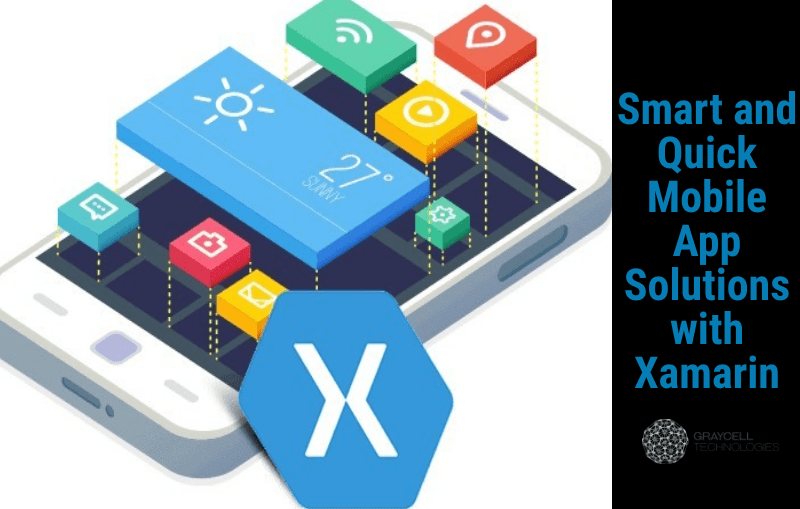Do you want a mobile-first approach to remain ahead of the competition in this revolutionary digital world? Is developing rich functional mobile apps to target larger audiences interests you? If yes, then there is an amazing framework to address all the challenges of a mobile application development business – Xamarin!! The mobile apps built in Xamarin are cross-platform and excellent to empower your objectives.
In this era of mobile usage, there are over 3 billion smartphone users across the world and the count is continuously increasing at a fascinating pace. As a result, the number of mobile app downloads is also rocketing. According to Statista, 21.3 billion apps from Google Play get downloaded in 2019. This phenomenon made the mobile app industry, one of the fastest-growing segments in the global economy where over 2 million apps on Google Play Store and about 1.83 million apps on the Apple App Store are already available for download. Under this scenario, one can sense the tough competition in the mobile app development market. One surely needs a speed-edge to stand out in the crowd. Fortunately, Xamarin is such an app development framework that builds the right product to stay ahead ensuring quick development and lesser time to market.
The Xamarin mobile app development is setting a new enterprise benchmark for developing mobile apps on iOS, Android, macOS, and more. It is a full package that includes smart ways to surge mobile app development. Let’s explore these to embrace fast mobile app development using Xamarin:
Shared Codebase for Faster Development
Native mobile apps are coded in a specific programming language and tied to one type of operating system. It forces an app-creating company to build duplicate versions that can run on other platforms. This is no issue with Xamarin as the entire app is written using C# complemented with the .Net framework. Due to a single shared .NET codebase, developers can create apps for all major platforms simultaneously where about 75% can be shared. Simply, it gives them the freedom to develop an app for any platform from their favorite operating system. This cross-platform ability makes development faster by huge time-saving.
Xamarin. Forms for Rapid Prototyping
Xamarin.Forms Material Visual is used to deliver mobile apps that look flawless on iOS and Android. It helps the views like button, frame, slider to create a unified appearance by following the same design cross-platform. One can design and build a customized app from a highly extensible single API by using Xamarin. Forms inbuilt pages, layouts, and controls for better results. It cuts the software development life cycle of creating apps for android and iOS separately by rapid prototyping with less platform-specific functionality. It enhances the speed of app development considerably.
Xamarin Test Cloud for Automated UI Acceptance Testing
Due to the wide variety of devices, device fragmentation, higher user expectations, etc. mobile app testing has become cumbersome.Xamarin Test Cloud tackles this challenge very efficiently. It is a test automation framework that tests mobile apps on a variety of different devices and prepares detailed reports. It gives a great estimation of user environments by running the test on multiple mobile devices, along with capturing screenshots, generating logs, and supporting popular frameworks like Appium, Espresso, Calabash, etc. It’s has taken the error-checking to a new level of accuracy with notably lesser time and effort.
Common Developers for All Platforms
It is possible to create apps for mobile and desktop experiences simultaneously. Moreover, common developers can build apps by using a single .Net platform for iOS, Android, & Windows. It works as a full package for companies to maintain consistency in design, accelerate development, and reduce project costs.
MBaaS for Making Development Work Easier
In the present digital transformation world, managing the mobile services with consistent integration across all the consumer touchpoints has become the need of the hour. Businesses are investing heavily in enterprise integration, push notifications, social integration, and mobile security. They want to deliver mobile digital experiences that convey brand-aligned user interactions and personalized experiences. Mobile Backend as a Service(MBaas) made this all easy by significantly reducing the amount of time and complexity associated with the launch of enterprise mobile initiatives. Azure with Xamarin provides a backend cloud-based storage for push notifications, authentication, data synching all as-a-service. This combo functionality gives the developers an edge over competitors by the ease of connecting apps with other apps. It allows them to concentrate more on front-end creativity as Azure MBaaS can manage the backend integration ensuring the engaging user experiences across hundreds of different devices.
Quick & Easy Maintenance and Updates

Xaarin makes maintenance and updates faster and easier because of its cross-platform ability. The changes will be reflected on both Android and iOS apps, only by applying the changes/updates to the source file. It saves time as well as energy to keep apps up-to-date.
Comprehensive Suite for Shorter Development Cycles
Xamarin has its own IDE and toolset, making it well-suited for development by cutting the SDLC. It includes Xamarin SDKs, platform-specific APIs to connect with native libraries, testing, analytics & distribution platforms, and more. Additionally, strong corporate support gains more business reputation for Xamarin to make it a reliable brand.
Final Words
In essence, Xamarin has gained momentum in the mobile industry in a short time. The reasons for its popularity are quite obvious. Enterprises are choosing Xamarin as an intelligent way to develop cross-platform mobile apps. The way it is solving the dilemma of mobile app development by providing an all-in-one solution, it has become one of the favorite frameworks among corporate. So, when are you trying your hand’s mobile app development using Xamarin!!
Feel free to share your opinion with us in the comment section below.






